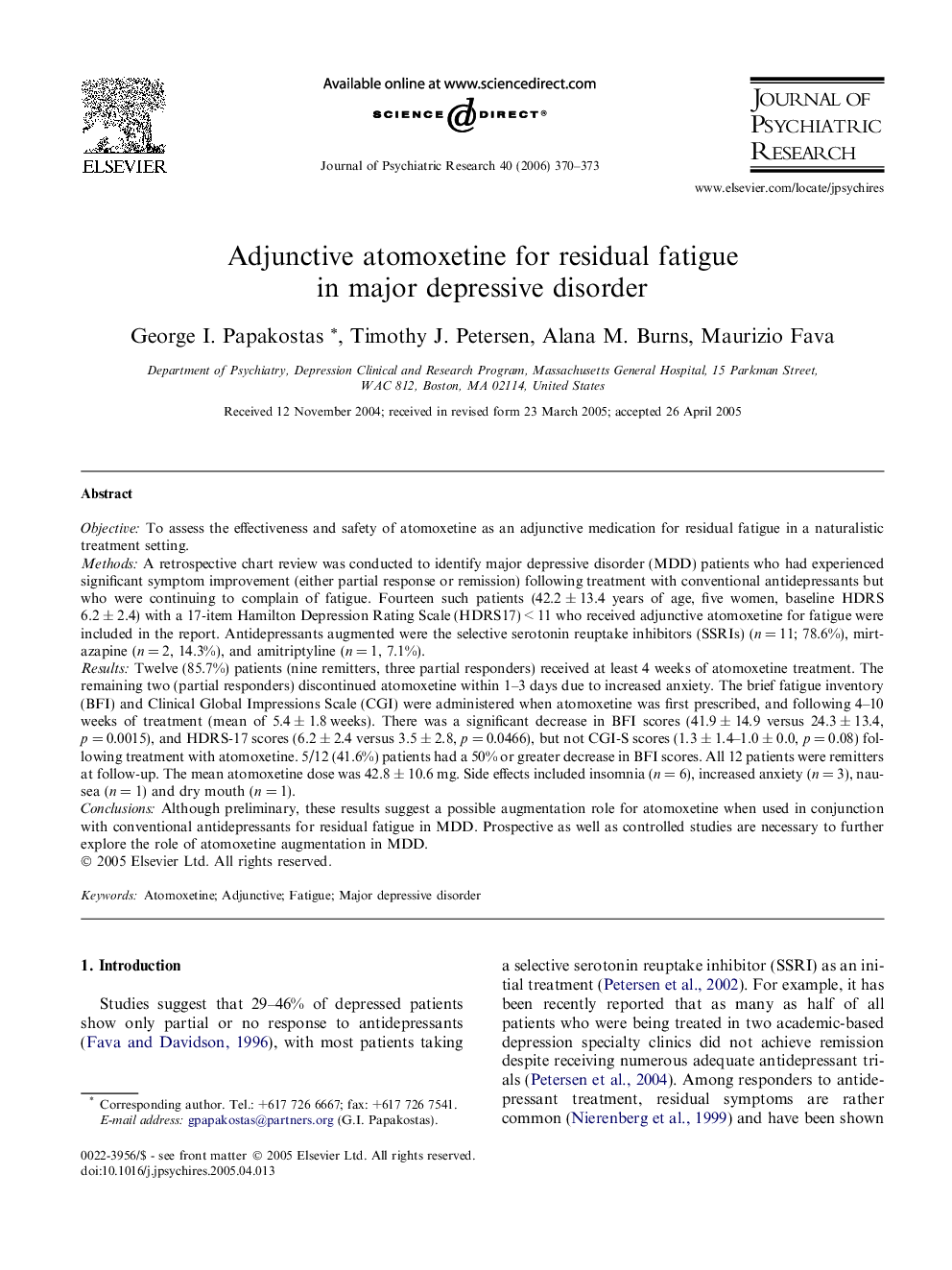| کد مقاله | کد نشریه | سال انتشار | مقاله انگلیسی | نسخه تمام متن |
|---|---|---|---|---|
| 326758 | 542538 | 2006 | 4 صفحه PDF | دانلود رایگان |

ObjectiveTo assess the effectiveness and safety of atomoxetine as an adjunctive medication for residual fatigue in a naturalistic treatment setting.MethodsA retrospective chart review was conducted to identify major depressive disorder (MDD) patients who had experienced significant symptom improvement (either partial response or remission) following treatment with conventional antidepressants but who were continuing to complain of fatigue. Fourteen such patients (42.2 ± 13.4 years of age, five women, baseline HDRS 6.2 ± 2.4) with a 17-item Hamilton Depression Rating Scale (HDRS17) < 11 who received adjunctive atomoxetine for fatigue were included in the report. Antidepressants augmented were the selective serotonin reuptake inhibitors (SSRIs) (n = 11; 78.6%), mirtazapine (n = 2, 14.3%), and amitriptyline (n = 1, 7.1%).ResultsTwelve (85.7%) patients (nine remitters, three partial responders) received at least 4 weeks of atomoxetine treatment. The remaining two (partial responders) discontinued atomoxetine within 1–3 days due to increased anxiety. The brief fatigue inventory (BFI) and Clinical Global Impressions Scale (CGI) were administered when atomoxetine was first prescribed, and following 4–10 weeks of treatment (mean of 5.4 ± 1.8 weeks). There was a significant decrease in BFI scores (41.9 ± 14.9 versus 24.3 ± 13.4, p = 0.0015), and HDRS-17 scores (6.2 ± 2.4 versus 3.5 ± 2.8, p = 0.0466), but not CGI-S scores (1.3 ± 1.4–1.0 ± 0.0, p = 0.08) following treatment with atomoxetine. 5/12 (41.6%) patients had a 50% or greater decrease in BFI scores. All 12 patients were remitters at follow-up. The mean atomoxetine dose was 42.8 ± 10.6 mg. Side effects included insomnia (n = 6), increased anxiety (n = 3), nausea (n = 1) and dry mouth (n = 1).ConclusionsAlthough preliminary, these results suggest a possible augmentation role for atomoxetine when used in conjunction with conventional antidepressants for residual fatigue in MDD. Prospective as well as controlled studies are necessary to further explore the role of atomoxetine augmentation in MDD.
Journal: Journal of Psychiatric Research - Volume 40, Issue 4, June 2006, Pages 370–373